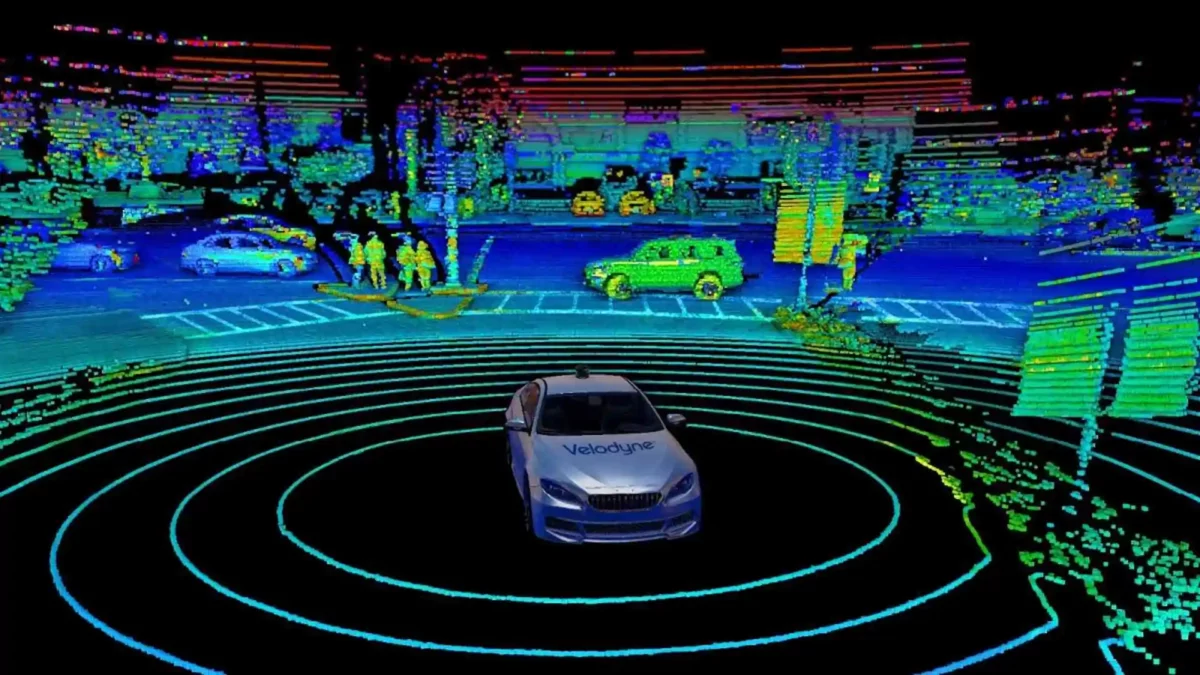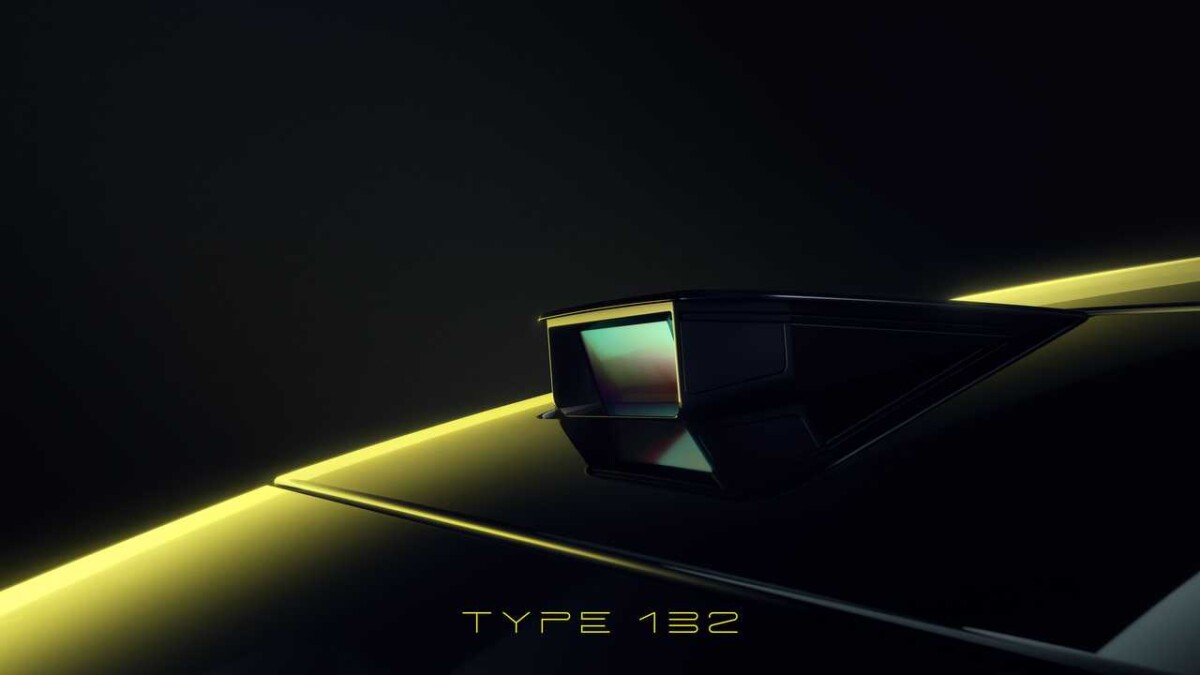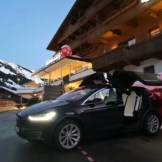You may have already read or heard about LiDAR, especially on the latest electric cars presented. This technology, still rare in our cars, should be more and more present in the years to come, and we are going to explain to you what it is.
The advent of the electric automobile has pushed the race for the autonomous car somewhat into the background. Manufacturers’ investments are mainly focused on the development of high-performance batteries and electric motors, in particular because in Europe (but not only), by 2035, these same manufacturers will no longer be able to market new thermal cars. And in the years to come, this will also be the case everywhere else, even in the countries that are the most recalcitrant today.
If the electric car tends to become widely democratized, it is a little less the case of the fully autonomous car. And for various reasons. Indeed, in addition to the technological aspect which remains to be perfected, there are other factors which come into account, starting with infrastructure (Car2X connection, connected cities, etc.), but also the different regulations that govern the development of the autonomous car.
The legislator agreed that there was six levels of autonomy for a vehicle. Some regions allow this or that level to be used, some don’t, and some are experimental. For example, level 3 autonomous driving has been authorized in Europe since 1er last September, but this is not the case everywhere. To discover more precisely the different levels of autonomy, do not hesitate to take a look at our dedicated article, but also at our infographic published below.

What is a LiDAR?
As stated a little above, LiDAR technology is not really, or even not at all, democratized on our cars. For example, the few production cars to be equipped with it are the Mercedes EQS with the Drive Pilot option, or the first SUV and the first electric car from Lotus, the Eletre. We can also mention the Nio ET7 and the brand new Volvo EX90.
But LiDAR is not new: we were able to discover it at the CES in Las Vegas in 2016! The acronym LiDAR stands for Light Detection And Ranging“. It is a method of calculation which makes it possible to determine the distance between the sensor and the target obstacle. A LiDAR uses a laser beam for detection, analysis and tracking.

In other words, it is a kind of large electronic component that is part of the sensor family. The sensor collects data on a physical parameter such as temperature, humidity, light, weight or even distance.
Knowing the speed of light, the LiDAR can precisely calculate the distance to each object from the delay between the emission of the laser pulse and the return pulse. Each second, this system thus takes millions of points of precise measurement of the distance, from which one can produce a 3D matrix of one’s environment. This detailed cartography can provide information on the position, shape and behavior of moving objects or people.
How does a LiDAR work?
LiDAR sees everything, like a camera, but its strength is that it also helps the vehicle’s computer system predict the behavior of objects and adapt driving accordingly. Something that other technologies present today in our vehicles do not.
Most of the time, a single radar provides constant measurements of distance and speed, but its performance can be a little penalized by the weatherwhile the resolution is lower and can hardly map small details at long distance.

Along with the radar, there’s also the camera, a technology frequently used on our modern cars, but this one relies heavily on powerful artificial intelligence and related software to translate the captured data into 3D interpretations. Environmental conditions and lighting can also affect camera vision technology.
The solution is therefore called LiDAR, since this big box offers accurate 3D measurement data over short and long distances, even in difficult weather and lighting. LiDAR can also be combined with other sensory data to produce the most accurate representation possible of static and moving objects in the environment.
What are the main advantages of a LiDAR for a car?
More than radars and cameras, LiDAR instantly generates a huge amount of measurements and can be accurate to within a centimeter, this which requires huge computing power within the car to manage and process all the data. LiDAR data can be easier to convert into 3D maps used to interpret the environment than images from cameras, which requires a lot of machine learning and artificial intelligence.
Using lasers instead of cameras means it’s unaffected by variations in ambient light and works well in all low-light conditions. The other advantage is also the speed of data processing. LiDAR data are direct measurements of distance. They do not need to be deciphered or interpreted, allowing for rapid operation and reducing the processing required.

Other fields of application of LiDAR
LiDAR is not only used in the automotive field, on the contrary, some sectors have been using it for much longer, such as in the airborne field. There are three types:
- Atmospheric: it uses UV rays thanks to which it can detect changes in the upper atmosphere (nitrogen, oxygen concentrations, etc.), and provide information on the evolution of aerosols (dust, volcanic clouds, forest fires, etc.)
- Topographic: it uses infrared rays thanks to which it can reproduce maps of different terrestrial environments (hydrological networks, forests, urban areas, coastlines, etc.)
- Bathymetric: it uses an infrared ray added to a green ray to obtain data on the seabed, often on the coasts. The infrared ray detects the surface of the coast and the water, while the green ray crosses the body of water to come into contact with the seabed and thus determine the depth of the objects detected (a wreck, a reef, etc.).
Nevertheless, this type of LiDAR remains extremely expensive. For terrestrial detection, two types of LiDAR are favored, less expensive and just as effective for their chosen field:
- Mobile: it is the one used for cars, the sensor is in motion and it is coupled to an inertial navigation system (as for airborne) in order to compensate for parasitic movements.
- Fixed: the sensor is mounted on a tripod, it is used for the analysis of buildings or natural areas, both outdoors and indoors. You have probably already come across an engineer on the street with this type of technology to take measurements in particular.
But the future belongs to another type of LiDAR: solid state or solid-state LiDAR. They have no moving parts, reducing their size and design. Their cost will therefore be much more affordable. For the moment, manufacturers are implementing hybrid LiDARs, with still some moving parts.
The importance of LiDAR for future self-driving cars
If manufacturers are generally well advanced on this subject, despite a slight decline due to the forced march of electricity, it is the legislator who will have the last word. There are still many parameters to take into account and the degree of autonomy of a vehicle does not depend solely on itself, but also of the surrounding environment. Cities will have to be connected to make traffic more fluid or even send information to autonomous vehicles to report a particular problem.

Nevertheless, LiDAR will obviously remain the “heart” of the autonomous car of tomorrow, and as you are surely aware, especially when you look at certain infotainment interfaces from certain manufacturers, digital technologies are not necessarily their favorite field.
Thus, some manufacturers delegate these activities to companies specializing in new technologies. This is the case, for example, of the Renault-Nissan-Mitsubishi Alliance which has partnered with Waymo, a company belonging to Google, not only for the technological aspect, but also for the evaluation of market opportunities and on joint work to provide a commercial, legal and regulatory framework for autonomous cars in France and Japan.
For its part, Tesla absolutely does not believe in LiDAR or radar. Elon Musk believes that it is indeed possible to offer fully autonomous driving solely based on cameras. In order to reduce the costs and complexity of its implementation. The future will tell us who was right, between manufacturers who rely on LiDARs, and those who prefer cameras alone.
To follow us, we invite you to download our Android and iOS application. You can read our articles, files, and watch our latest YouTube videos.


